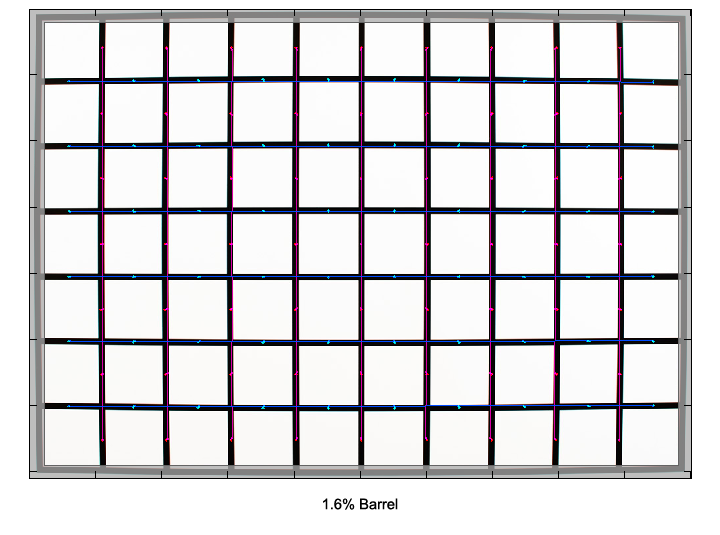|
Page 2 of 3

Distortion
The lens shows a moderate amount barrel distortion at around 1.6%. That's a bit more than one would expect from a normal prime, but it's actually in line with the competition.

The chart above has a real-world size of about 120x80cm.
Vignetting
A dedicated fast DX lens is expected to show a signifcant amount of vignetting at large apertures, and the Sigma certainly meets those expectations. However, the lens shows a fairly unusual vignetting characteristic. Normally the vignetting curve is logarithmic (steep drop in the beginning followed by moderate fading) whereas the curve of the Sigma shows a quite linear behavior. This isn't really favorable because it takes a couple of f-stops until the vignetting reaches really low values.

MTF (resolution)
Let's start with the good news: the lens delivery impressive resolution in the image center. Wide open, the results are already very good here and increase to excellent levels from f/2 onwards.
The borders and corners are a very different story though. They start out poor wide open and the lens needs to be stopped down considerably to lift the resolution to good values here. For a prime lens, that's a somewhat disappointing result.
The lens showed a slight amount of focus shift when stopping down (residual spherical aberration).
Please note that the MTF results are not directly comparable across the different systems!
Below is a simplified summary of the formal findings. The chart shows line widths per picture height (LW/PH) which can be taken as a measure for sharpness.
If you want to know more about the MTF50 figures you may check out the corresponding Imatest Explanations

Chromatic Aberrations (CAs)
The level of chromatic aberrations (color shadows at harsh contrast transitions) is acceptable for a 30mm lens, but nothing to rave about either. However lateral CAs can easily be corrected in post processing and most newer Nikon DSLRs already do this on their own (as well as most of the current RAW converters).

Bokeh
The Sigma lens shows a bit busy image blur in front of the focus point. However, for most photographic subjects that's hardly an issue. The more important background blur is actually quite smooth, even in the often critical transition zone.
Background highlights show a rather unusual shape, though. Wide open there is some cut-off due to mechanical vignetting. Surprisingly, the shape of background highlights does not improve towards circles by stopping down. In fact it seems the vignetting remains visible, even at moderate distances from the image center. In addition, the shape of the aperture blades becomes visible.
The background highlights are also troubled by bokeh fringing (see next section).

Bokeh Fringing
Bokeh fringing is a general problem in this lens class. As you can notice below the halos have different colors - magenta (red + blue) in front of the focus point and green beyond. Typical for most fast primes the Sigma shows a considerable amount of bokeh fringing at large aperture settings. Stopping down helps to reduce the amount of fringing significantly.
In addition, these shots also show the focus shift when stopping down, which was mentioned in the MTF section.
|